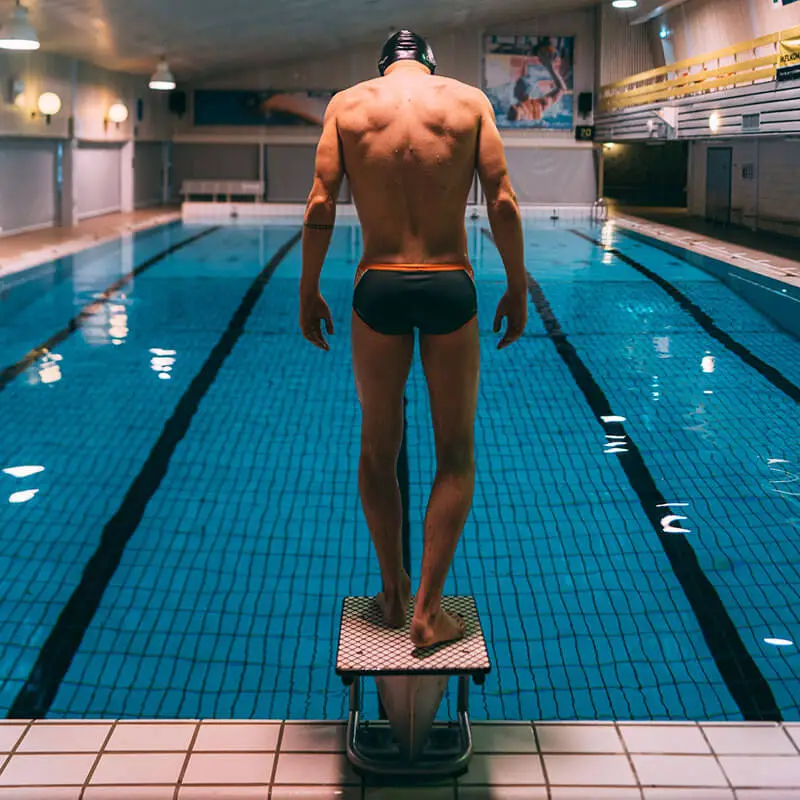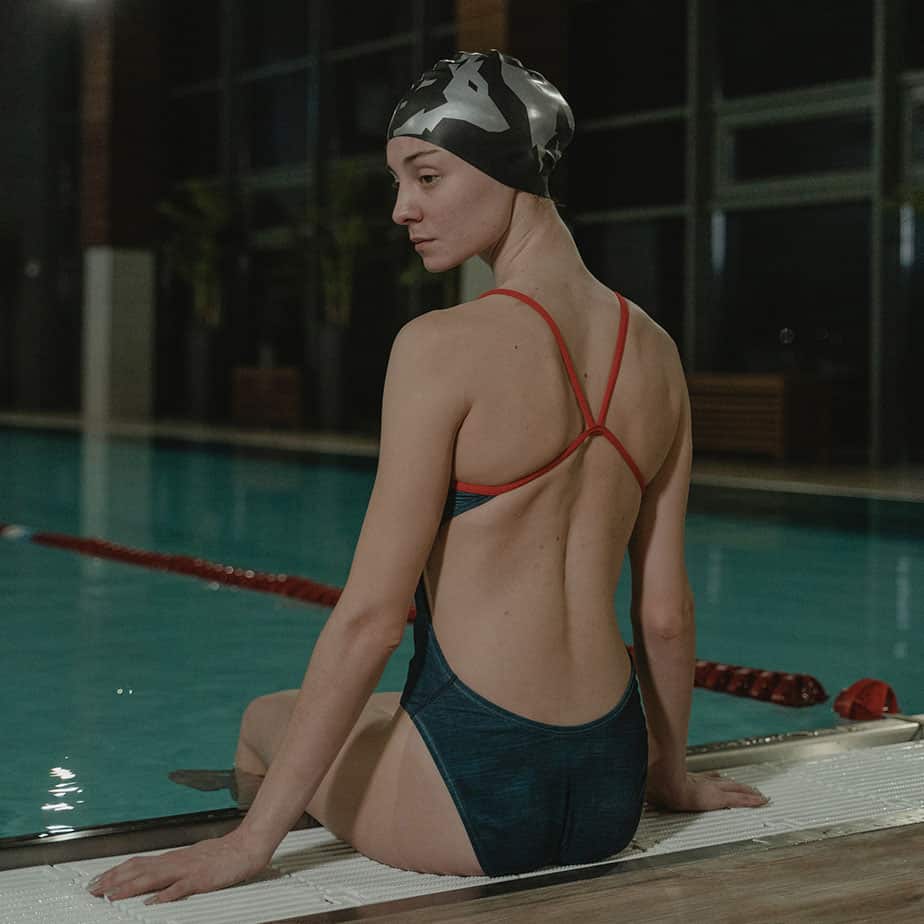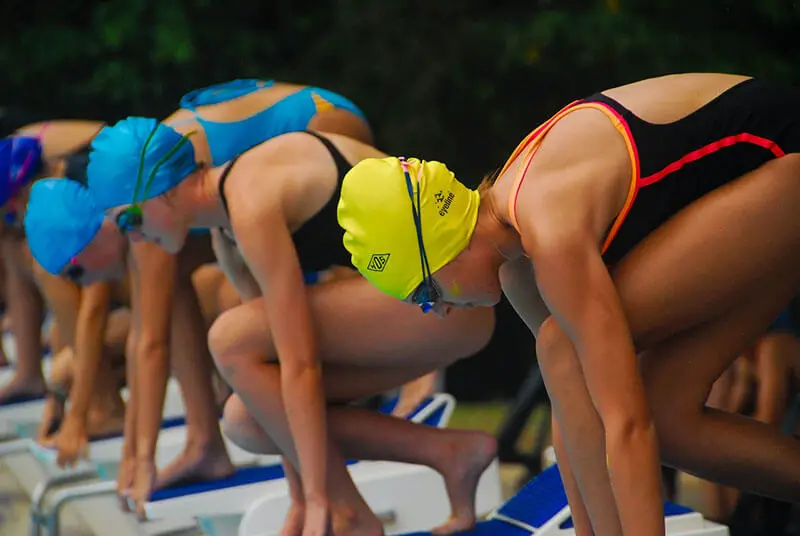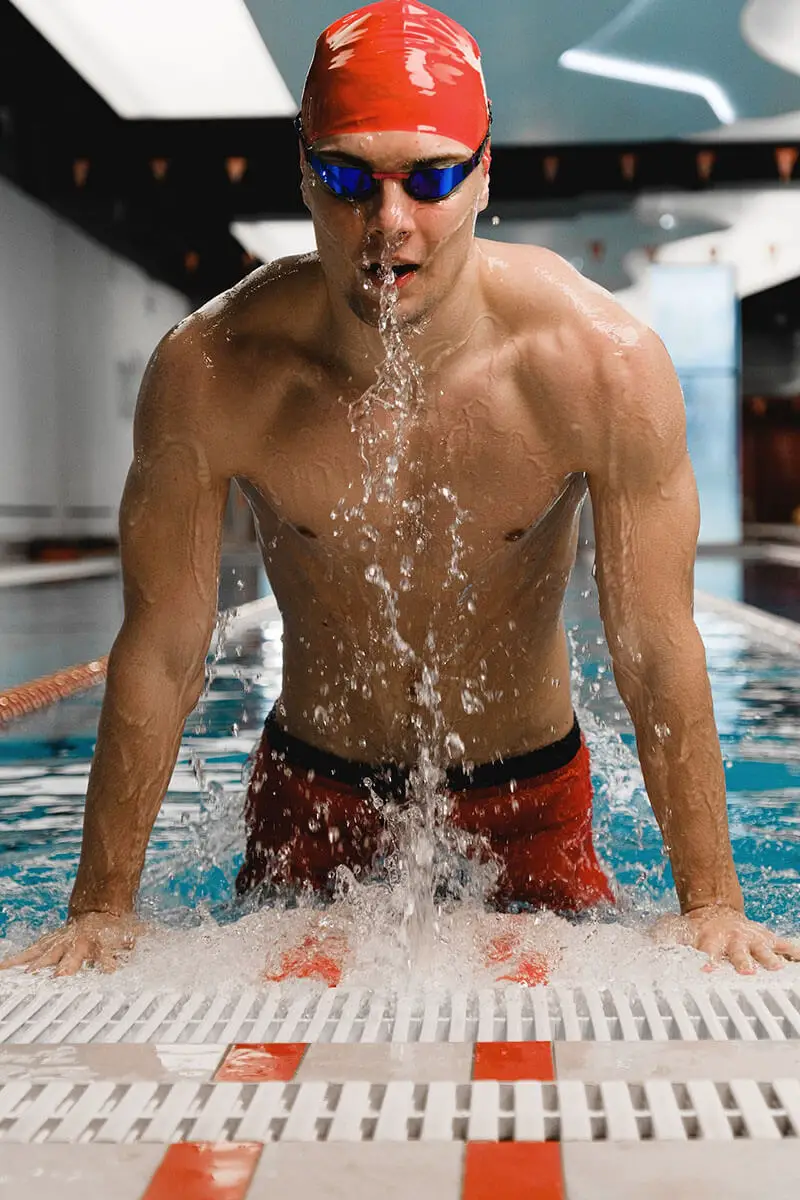If you’ve ever seen a lineup of swimmers, you’ll immediately notice they all have many physical attributes in common.
Of course, there will be variations between people, but generally speaking most swimmers are: lean and muscular, with broad shoulders, long arms and a long torso, and short legs despite being typically taller than the average person. Perhaps not as visibly evident, they also likely have a very flexible body with a strong core and great cardiovascular fitness. These physical attributes make up the ideal swimmer’s body.
If you are genetically blessed to have a body with some or all of the characteristics listed above, then perhaps swimming is the profession for you. These characteristics are ideal because they allow a swimmer to swim with maximum speed, efficiency, and power to get the best times in a race.
But what exactly makes these physical attributes so beneficial? And how can a swimmer who lacks these attributes develop these traits to reach their full potential? Read on to discover the secrets behind the ideal swimmer’s body.
Above average height

You will find that most successful competitive swimmers are taller than the average person. It’s not because coaches are discriminating against shorter swimmers; it’s advantageous to be tall in the swimming world.
If you are taller, then you naturally possess longer limbs. This means you can reap the following benefits: longer reach, bigger hands, and the ability to displace more water with each pull, all of which helps you cover more distance with each stroke.
Furthermore, a taller swimmer simply creates less drag in the water swimming at the same speed of someone who is shorter than them.
This is not a theoretical benefit either; the data on successful Olympic swimmers over the years is showing a trend towards taller swimmers winning more medals than shorter ones.
In the 2016 Olympic games, it was found that the average height of an Olympic swimming finalist was 188 cm (6’2”) for men, and 175 cm (5’9”) for women.
To put that into perspective, the average American man is only 175.4 cm (5’9”) and the average American woman is 161.5 cm (5’ 3.5”).
Therefore, the average swimming finalist at the Olympics is 5” taller than the average person of their gender.
Lean and muscular physique
Looking again at a line-up of swimmers, you’ll notice that not a single one is bulky. They may have some muscle, sure, but all of them are lean and mean.
Having a lean and toned physique is optimal in the ideal swimmer’s body. The reason for this is that excess body fat can increase one’s underwater drag. Furthermore, having some lean muscle can enhance the power behind their strokes, helping them to achieve maximum speed.
Thankfully, it helps that swimming is a fantastic way to burn a lot of calories. In just one hour of swimming at a medium pace, you can burn 400 calories, which is comparable to running at a medium pace for an hour. Therefore, most swimmers naturally will be lean as part of their training.
As for being muscular, it boosts their pull and kick, resulting in faster swimming speeds. It’s important to note that most swimmers weight train to build up their muscles; they do not build it entirely from swimming alone.
Broad shoulders
Another important attribute in the ideal swimmer’s body is having broad shoulders. Swimmers with wider shoulders have greater surface area to pull water, and it is a key factor in generating power during swimming strokes.
While performing a stroke, the muscles in the back and shoulders primarily are used to generate propulsion. Having broad shoulders provides more space for the swimmer’s back muscles to attach to, increasing their leverage and power.
Additionally, having broad shoulders helps a swimmer maintain a streamlined body position in the water, keeping drag to a minimum and helping them glide through the water easily.
If you do not have broad shoulders naturally, there is some leeway for you to develop them through strength training. Focus on performing pull-ups, lat pulldowns, dumbbell rows, and bench presses to build strength and width in your shoulders.
Furthermore, exercises targeting the rotator cuff muscles, such as internal and external rotations, can strengthen shoulder stability which reduces the chances of shoulder injuries.
Long arms and torso

If you’re tall, you likely already have longer arms and a longer torso than most. Some tall swimmers have even longer arms and torsos than swimmers their height.
I briefly covered this already, but a long wingspan gives a swimmer the advantage of having greater surface area to catch water with, generating more propulsion per stroke, leading to faster swim times.
A longer torso lets swimmers perform a stronger undulating motion which propels them through the water more efficiently.
In addition, it also allows them to have a greater lung capacity as there is more space for the lungs to expand, and this also lends to a high natural buoyancy.
Center of mass closer to the lungs
The center of mass is the balancing point that each swimmer has in the water. The closer it is to their center of flotation (their lungs), the easier they will find it to float horizontally.
If a swimmer has a long torso and a triangular shape (broad shoulders leading down to a narrow waist), their center of mass will be closer to their lungs and they can basically float horizontally effortlessly.
Short legs
If the length of your arms and torso is longer than someone of equal height, that implies that you have shorter legs – another advantage in swimming.
Legs create drag in the water. If you’re in your early stages of your competitive swimming career, one of the best ways to improve your time is to reduce the drag created by your legs by keeping them high in the water so that you have a more streamlined shape.
It’s much easier to do that if you have naturally short legs. However, shorter legs can be trained such that they provide great power from a good kick, so you can reap the benefits of less drag while maximizing thrust.
Flexible and streamlined body

To truly take advantage of a longer body, swimmers ought to be flexible. Outside of swimming. performing stretches and mobility exercises such as yoga or Pilates can improve their flexibility in critical areas like the hips, shoulders, ankles and back.
Swimmers should also incorporate pre- and post-swim stretching routines to improve and maintain their range of motion and flexibility.
It is critical for a swimmer to be as streamlined as possible, as it helps him/her achieve optimal performance in the water. For example, the reason why swimmers wear swim caps and competitive jammers is to help streamline their shape.
Did you know that the jammers Olympic swimmers wear (also known as tech suits) fit so tight that they literally compress the athletes’ muscles to streamline their shape? The material is also hydrophobic which keeps water from being absorbed into the material.
All of these reasons and more resulted in jammers becoming the standard swimwear in the Olympics over swim briefs; because they literally allow the swimmer to swim faster.
Most swimmers don’t have access to a techsuit, but at least they can streamline their bodies with good technique. By keeping their bodies in a horizontal body position, they minimize the water resistance they experience so they can efficiently glide through the water.
A strong core
Lastly, most swimmers have a set of washboard abs. That’s partially due to the fact that they are very lean, but also because a strong core is a fundamental requirement for maintaining proper body alignment in the water and increasing the power of their strokes.
As mentioned, it is crucial that swimmers keep their body in a horizontal, stable, and streamlined position. Without a strong core, you will struggle to keep your legs up and your torso down to maintain the ideal horizontal body position.
Furthermore, the core muscles also help to generate power during strokes and while performing any undulating motions. Swimmers will find it easier to transfer energy from their upper body to their lower body which leads to a strong kick and pull.
You can achieve a strong core by performing targeted exercises such as planks, crunches, Russian twists, and leg raises. Again, Pilates and yoga can also help to enhance core strength and simultaneously improve your flexibility.
The embodiment of the ideal swimmer’s body
The closest someone has come to achieving the ideal swimmer’s body is arguably the world’s greatest Olympian, Michael Phelps.
Here are some of his stats. He is taller than the average swimming finalists’ height, standing at 193 cm (6’ 4”). He has a 201 cm (6’ 7”) wingspan, a long torso fit for someone who is 204 cm/6′ 8” tall, with short legs that are fit for someone who is 183cm/6’ tall.
He has massive hands and legs, broad shoulders with a triangular-shape back, and he possesses incredibly flexible shoulders and ankles. And have you seen the abs on this man? He clearly has a strong core.
He also trained five to six hours a day, six days a week, in which he would swim a total of 80,000 meters or nearly 50 miles. To fuel his insane workouts, he consumed 10,000 calories a day.
Michael Phelps exemplifies everything there is in the ideal swimmer, not just in body proportions, but also in work ethic. It’s no wonder that he is literally the most decorated Olympian of all time.
I do not have the ideal swimmer’s body. Should I just give up?
Many of the physical characteristics described above, like height, long arms and torso, shorter legs, and broad shoulders are largely influenced by genetics.
If you have already had your growth spurt and still do not have these ideal characteristics, then should you just give up as a swimmer?
I’m going to be brutally honest. If you don’t possess the ideal swimmer’s body, your prospects of being a top swimmer are not good.
At the same time, I think you know that being taller or having long arms does not guarantee success in the sport. Otherwise, why aren’t swimmers all 7-feet tall?
Clearly, there are other factors involved beyond physical attributes such as consistent training, proper technique, mental toughness, and a passion for the sport.
Even if you are missing some of the physical characteristics in an “ideal” swimmer’s body, you can still work hard and continuously improve yourself. With enough dedication and perseverance, you can still do well in the sport even if you’re at a disadvantage.

